Sunday represents the 174th and final day of the NBA’s 2022/23 regular season, with all 30 teams in action at either 12:00 pm Central time (1:00 pm ET) or 2:30 CT (3:30 ET).
Not all of today’s games are must-see matchups, but there’s plenty at stake on Sunday, including several of the postseason seeds in the Western Conference.
Here’s what to watch for on the final day of the ’22/23 regular season:
Western Conference playoff seeding
The Nuggets (No. 1), Grizzlies (No. 2), Kings (No. 3), Suns (No. 4), and Thunder (No. 10) have locked in their seeds in the West, but none of those teams know which opponent they’ll be facing in the first round of the playoffs — or in the first round of the play-in tournament, in OKC’s case.
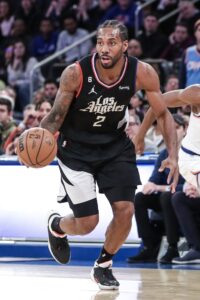 The results of four games today will determine which clubs end up holding the Nos. 5-9 seeds in the West. Those games are as follows:
The results of four games today will determine which clubs end up holding the Nos. 5-9 seeds in the West. Those games are as follows:
- New Orleans Pelicans at Minnesota Timberwolves
- Utah Jazz at Los Angeles Lakers
- Golden State Warriors at Portland Trail Blazers
- Los Angeles Clippers at Phoenix Suns
There are 16 different combinations of potential winners in those four contests, so we won’t run through every single scenario, but they can all be found right here. Here are a few details, in simplified terms:
- The Clippers, Warriors, and Lakers currently rank fifth, sixth, and seventh, respectively, and would hold those spots if all three teams win today. The Clippers can’t fall further than No. 7, while Golden State and the Lakers could end up as low as No. 8.
- The loser of the Pelicans/Timberwolves game will be the No. 9 seed. New Orleans could move as high as No. 5 with a win in that game, while Minnesota would slide up to No. 7 or No. 8 with a victory.
- The Lakers will be the No. 8 seed if they lose to Utah. If they win, they’ll mostly likely end up at No. 6 or No. 7, though there’s one scenario where they could defeat the Jazz and still drop to No. 8 (if the Pelicans, Warriors, and Suns all win).
The Suns will be resting most of their key players, including Devin Booker, Kevin Durant, Chris Paul, and Deandre Ayton, on Sunday, so it would be a surprise if the Clippers lose that one, even though the game is in Phoenix. A Clippers win would lock the team into a first-round matchup against the Suns, which isn’t the most desirable outcome, but the Clips would risk slipping into play-in range with a loss, so they can’t get too clever.
Similarly, with the Blazers in all-out tank mode, it’s hard to imagine the Warriors losing that game in Portland, since doing so could result in a slide to No. 7 or No. 8.
It’s worth noting that all four of these games tip off at 2:30 pm CT, so no teams will take the floor knowing any outcomes of the other three games.
Draft and lottery positioning
There are several draft-related storylines worth monitoring today. Here are a few of the most important ones:
The Mavericks’ top-10 protected pick
With a loss on Sunday, the Mavericks would secure, at worst, the NBA’s 10th-worst record, giving them nearly an 80% chance to keep the top-10 protected first-round pick they owe the Knicks.
If the Jazz win and the Mavericks lose, the two teams would finish in a tie for the ninth-worst record and Dallas’ odds of keeping its first-rounder could increase significantly. If the Mavs were to win a coin-flip tiebreaker in that scenario, they’d have nearly a 97% chance to keep their pick.
On the other hand, a win today might put Dallas in a tie with the Thunder or Bulls for the league’s 10th-worst record and could significantly reduce the Mavs’ odds of hanging onto that first-rounder, depending on the results of the tiebreaker.
The fifth lottery spot
A loss today would assure the Trail Blazers of having the fifth-best odds in the lottery. That would give them a 10.5% shot at the No. 1 overall pick and a 42.1% chance to move into the top four.
A win could move Portland into a tie with the Magic and/or Pacers, potentially reducing those odds to 9.0% and 37.2%, respectively.
The Rockets’ second-round pick
The Pacers and Celtics will be keeping a close on the Rockets and Spurs today. As we previously outlined, Indiana will get Houston’s second-round pick if it’s at No. 32, while Boston will get it if it’s No. 33.
A Houston win and a San Antonio loss today would ensure that pick moves to No. 33; a Houston loss and a San Antonio win would lock it in at No. 32.
If both teams win or lose, that pick would be TBD. Where it lands would hinge on the results of a coin-flip tiebreaker and May’s draft lottery (if the two teams are tied, whichever one gets the lower pick in round one gets the higher pick in round two).
The Pelicans’ swap rights
The Pelicans have the right to swap first-round picks with the Lakers. Heading into today’s games, the two teams have identical 42-39 records.
However, even if the Pelicans win and the Lakers lose, New Orleans won’t necessarily end up using its swap rights — if the Lakers were to make the playoffs via the play-in tournament and the Pelicans lose in the play-in, New Orleans’ pick would be the higher one, regardless of regular season record.
Teams with open roster spots
The Jazz and Nets filled their open roster spots on Saturday, while the Grizzlies also made a series of roster moves in preparation for the playoffs. That leaves just five teams with open roster spots heading into Sunday. Those clubs are as follows:
Open 15-man roster spot:
- Houston Rockets
- Los Angeles Lakers
- New York Knicks
Open two-way slot:
- New Orleans Pelicans
- Phoenix Suns
It would be a surprise if the Rockets, Lakers, and Knicks don’t fill their roster openings today. There’s essentially no downside to signing a player to a multiyear contract that only includes one day’s worth of guaranteed money, with a team option or non-guaranteed salary for 2023/24.
The Pelicans and Suns could also make two-way signings today, though that’s a little less likely, since it’s harder to convince free agents to sign two-year two-way contracts, and those players won’t be eligible for the postseason.
It’s also worth noting that two of the Trail Blazers‘ hardship 10-day contracts (for Skylar Mays and Shaquille Harrison) expired overnight on Saturday, so if they want to bring those players back for their regular season finale, they’ll need to re-sign them on Sunday.
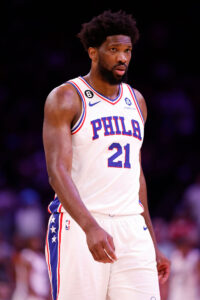 Embiid’s final line included 52 points, 13 rebounds, and six assists on 20-of-25 shooting. He was a plus-17 in nearly 39 minutes. The 76ers were outscored by 15 points in the nine-plus minutes he didn’t play.
Embiid’s final line included 52 points, 13 rebounds, and six assists on 20-of-25 shooting. He was a plus-17 in nearly 39 minutes. The 76ers were outscored by 15 points in the nine-plus minutes he didn’t play.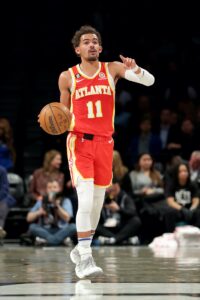 Frankly, the race for the playoffs in the East would have been more exciting under the NBA’s old system, where only the top eight seeds at the end of the regular season made the playoffs. Currently, the Hawks and Raptors are tied for the No. 8 spot at 39-39 (Atlanta has the tiebreaker advantage), while the Bulls are one game back at 38-40. It’s a safe bet that all three teams will make the play-in tournament, whereas in past years they would’ve been fighting for a single playoff spot.
Frankly, the race for the playoffs in the East would have been more exciting under the NBA’s old system, where only the top eight seeds at the end of the regular season made the playoffs. Currently, the Hawks and Raptors are tied for the No. 8 spot at 39-39 (Atlanta has the tiebreaker advantage), while the Bulls are one game back at 38-40. It’s a safe bet that all three teams will make the play-in tournament, whereas in past years they would’ve been fighting for a single playoff spot.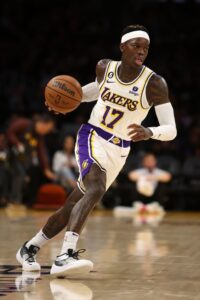 Before the 2022/23 season started, Schröder said he had “
Before the 2022/23 season started, Schröder said he had “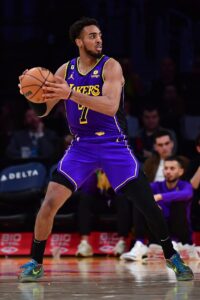 There’s nothing about Brown’s game that really jumps out at you, nor do his modest numbers — he’s averaging 7.3 PPG, 4.1 RPG and 1.2 APG in 70 games (45 starts, 24.9 MPG).
There’s nothing about Brown’s game that really jumps out at you, nor do his modest numbers — he’s averaging 7.3 PPG, 4.1 RPG and 1.2 APG in 70 games (45 starts, 24.9 MPG).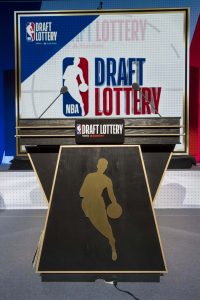 May 16: NBA draft lottery
May 16: NBA draft lottery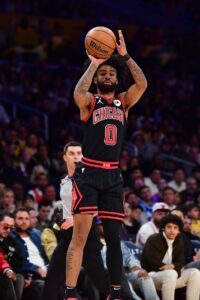
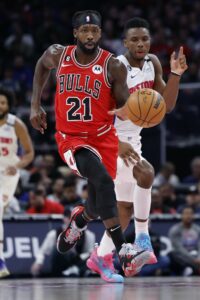 Beverley’s free agency situation is strange. On one hand, the Bulls have gone 10-5 with him in the starting lineup – a very good mark, particularly for a team that has been wildly inconsistent in 2022/23.
Beverley’s free agency situation is strange. On one hand, the Bulls have gone 10-5 with him in the starting lineup – a very good mark, particularly for a team that has been wildly inconsistent in 2022/23.